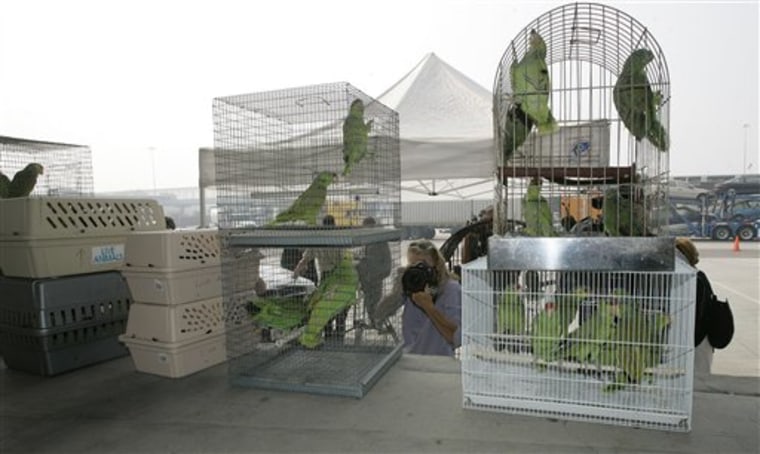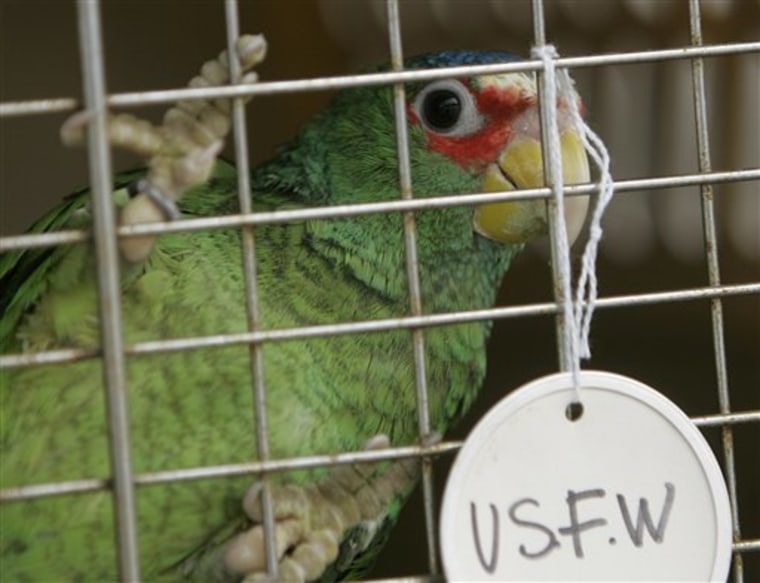U.S. officials have returned 149 parrots and parakeets that were sedated and hidden under blankets or in duffel bags and smuggled into the United States from Mexico.
The neon-green birds, which had been held in quarantine for up to 18 months on U.S. soil at San Diego's Otay Mesa border crossing, were handed over in cages to Mexican authorities Wednesday.
They will be taken to native habitats in southern Mexico or kept for breeding purposes if veterinarians determine they cannot survive in the wild.
Strict quarantine rules, partly in response to outbreaks of exotic Newcastle disease in California, have created a thriving black market for pet birds, authorities say. Talking parrots like those returned Wednesday — some cawing in Spanish or calling for "Lolita" — can fetch up to $1,000 apiece.
"This is all about money," said Assistant U.S. Attorney Anne Perry. "It's all about getting around the quarantine, which can be very expensive."
Smugglers routinely quiet birds with sedatives to stop them from talking or moving in transit, usually by spiking food put in boxes or duffel bags, sometimes with tequila.

"This is the black market — they certainly aren't using veterinary-approved methods," said Lorraine Concha, an assistant special agent in charge for U.S. Immigration and Customs Enforcement in San Diego.
Smugglers tend to use the busy border entry points in San Diego, hoping to avoid detection, rather than quieter crossings further east. ICE and U.S. Fish and Wildlife are continuing to investigate, Concha said.
